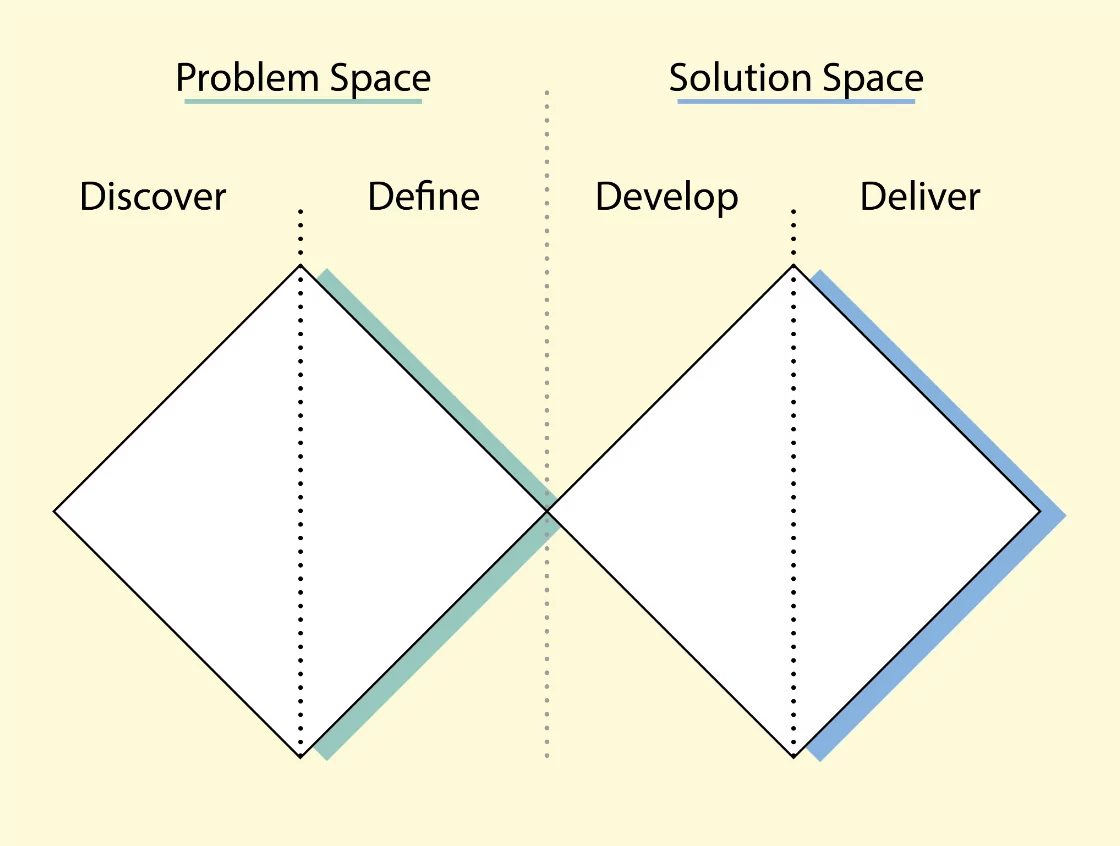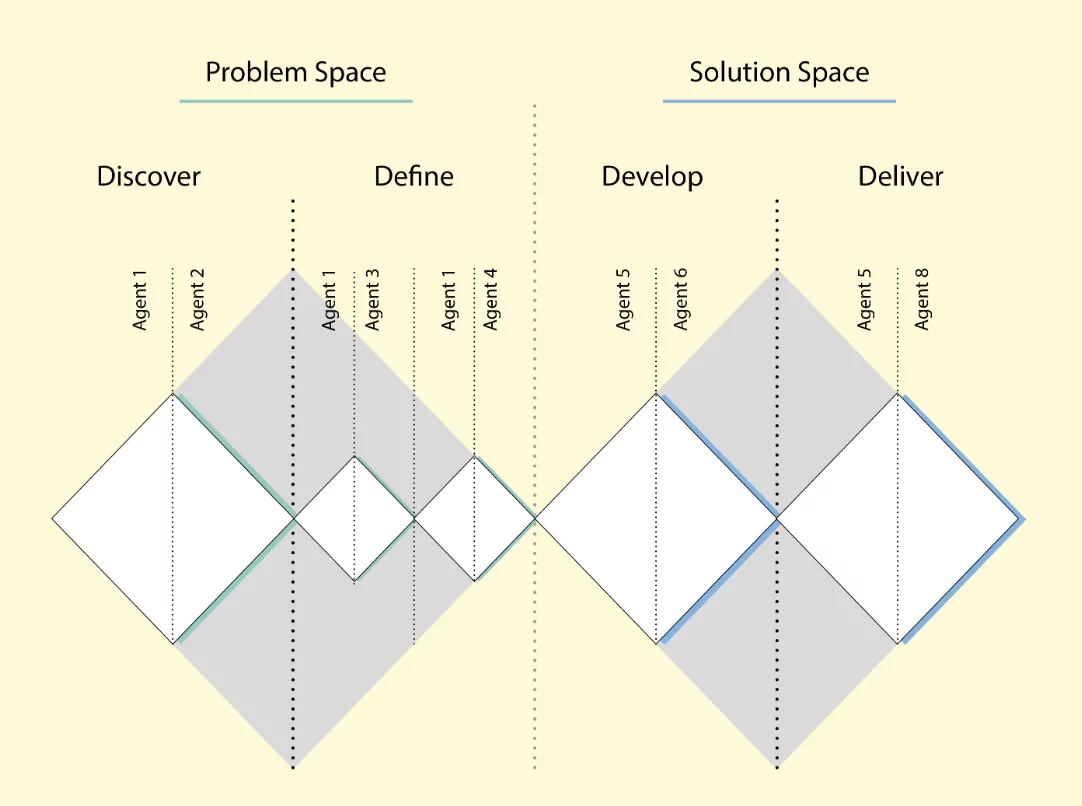The debate about AI as a driver of innovation is often heated. It’s no wonder, given the conflicting viewpoints. On the one hand, proponents hail AI as a revolutionary force that will pave the way for unprecedented innovation. But studies warn that this very technology could lead to a loss of creativity and collective diversity. Critics argue that AI merely recombines existing ideas and doesn’t create anything truly new. However, there are impressive examples of AI tackling complex problems that were previously thought to be unsolvable.
This begs the question: What is true about these perspectives? There is no doubt that generative AI is influencing the innovation process and has led to an explosion of new tools. But how does this technology, which produces text, images, video, code or music of unprecedented quality, actually change the innovation process?
AI Transforms the Innovation Process
AI tools not only enrich the traditional innovation process, they also change it. This is particularly evident when we examine selected AI tools using the Double Diamond innovation process model. This model, named after its resemblance to two joined diamonds, is divided into four phases: Discover, Define, Develop and Deliver (see Figure 1). Each phase requires divergent or convergent thinking – either opening up or closing the space for ideas and solutions, collecting ideas and solutions or sorting them out.
 Figure 1: The classic double-diamond model divides the innovation process into four phases: Discover, Define, Develop and Deliver.
Figure 1: The classic double-diamond model divides the innovation process into four phases: Discover, Define, Develop and Deliver. Discover
In the Discover phase, which requires divergent thinking, AI tools help to find problems. This mainly involves research and trend analysis. Generative AI helps filter meaningful information from large data sets to make strategic decisions. This can be internal customer data or externally collected and processed data. The unique aspect is that large language models enable a new form of dialogue with data.
With these models, it is possible to ask questions of the data in natural language. For example, you can ask a large number of trend reports about what trends are emerging in the automotive sector and compare them with trends in the technology sector. Similarly, touchpoint data, such as app reviews or user feedback, can be queried for frictions in the customer journey. Tools such as Kraftful can be used to analyse app reviews in the app store to determine which features users find most exciting or frustrating.
There is no agreed term for this type of questioning technique. Often existing terms such as semantic search or natural language querying are used, or it’s just called chat. The dialogue form has the advantage of generating answers at a high level of detail, which is strategically important for the project.
Generative AI is also revolutionising the concept of the prototypical user, or persona. Tools such as Synthetic Users allow you to create synthetic personas and dialogue with them about their needs, frustrations and potential market gaps. Feedback on the suitability of possible solutions can be obtained and refined iteratively. In addition to the personas’ responses, the AI also generates their psychological personality traits and leading characteristics. Ideas and feedback can be easily validated before conducting extensive interviews with real users. Of course, ChatGPT also helps to create interview guides and questions for interviews with real and synthetic users.
Define
In the Define phase, which requires convergent thinking, AI helps to narrow and define the problem. Familiar techniques such as the open-ended “How could we?” question are quickly implemented by generative AI, as are tasks for finding appropriate problem statements. The Board of Innovation has developed a set of tools for this purpose, which can be tested for free at ai.boardofinnovation.com.
Develop
In the Develop phase, which again requires divergent thinking, AI tools help to generate and develop ideas. Brainstorming is probably the best known ideation method, which ChatGPT also supports. Tools such as Seenapse go a step further by enriching the knowledge of large language models with human associations provided by users. This can theoretically increase the diversity of ideas.
A key area at this stage is prototyping, which generative AI supports through text and image generation. OpenAI’s Dall-E, for example, not only generates prompts, but also creates corresponding images based on them. The multimodal approach of Dall-E or Google’s Gemini also allows existing images to be used as templates. These tools then modify them more or less according to the prompt. This process, known as asset hacking, makes it possible to stay close to an existing visual brand identity.
Deliver
In the final Deliver phase, which again requires convergent thinking, AI helps to select and implement ideas. Despite their technical sophistication, tools such as Dall-E or Midjourney often reach their limits. The fit of solutions currently varies between inspiration and preliminary implementation requiring human intervention, depending on the industry. However, there are specialised tools that deliver highly usable results for limited application areas. Flair.ai, for example, allows the creation of product photos for consumer goods that can be used as end products.
Equally interesting is the evaluation of many ideas. Solutions such as Conjointly or Memorable allow extensive evaluation of product ideas, even providing feedback on which visual features need to be improved to appeal to more users.
A look at generative AI tools shows how they not only enrich the traditional innovation process, but also transform it. While the divergent and convergent thinking phases are typically sequential, generative tools often allow for simultaneous thinking.
Because an idea is by its very nature a concrete expression, these tools often blur the clear boundary between idea generation and implementation. ChatGPT, in particular, takes the concept of brainstorming to a new level by creating a continuous iterative innovation practice through dialogue with the machine. It could even be said that the free association and continuous intake of new machine-generated ideas creates a kind of AI-based meta-innovation practice.
The Autonomous, Ever-Active Innovation Process
This transformation goes one step further. The process itself can be broken down into automated steps that merge into an independent overall process. Autonomous agents, such as customised GPT models, come into play, operating independently of humans. Tools such as Microsoft’s Semantic Kernel allow the programming of such autonomous GPT agents. Each of these agents specialises in optimising ideas and solutions according to specific criteria.
For example, one agent might be responsible for generating ideas, while another evaluates the economic viability of these ideas. Based on this evaluation, the first agent iteratively develops new concepts. Ideas are continuously refined as convergent and divergent phases rapidly alternate. A third agent could assess the sustainability of ideas and return them to the first agent for further refinement. A fourth agent examines practical feasibility and ranks the ideas, while a fifth agent visualises the ideas. A sixth agent further refines the ideas by aligning them with user preferences. Finally, a seventh agent reviews the solutions in terms of target audience and performance metrics to optimise the process.
The whole process can be repeated as often as desired, in dialogue with any number of agents, until concepts emerge that meet all the specified requirements. The agents autonomously explore the problem and solution space and negotiate the quality of ideas and solutions among themselves. This is how the innovation process becomes the Multiple Diamond Model and the Autonomous Innovation Machine (see Figure 2). The question naturally arises as to where humans should intervene in the process and evaluate the results. It is crucial that humans remain involved in all processes and check the quality of the results.
 Figure 2: With the help of AI, the innovation process becomes a multiple-diamond model and an autonomous innovation machine.
Figure 2: With the help of AI, the innovation process becomes a multiple-diamond model and an autonomous innovation machine. In addition, the traditional innovation process is typically cyclical, with market analysis and trend scouting often conducted on a quarterly or even annual basis. In a world where crises happen faster, consumer behaviour changes rapidly and trends evolve at an unprecedented pace, this approach is reaching its limits.
The Lufthansa Innovation Hub’s CRTX tool shows how trend analysis can be established as a continuous process. The tool constantly scans external, publicly available data on the web, classifies it and processes it for the database using generative AI. For each trend report, whether in PDF format or on the web, the system automatically generates a summary and keywords, allowing consultants to identify trend signals even across industries. In this way, the innovation process becomes a continuous activity, marking a crucial transition from a cyclical to a continuous process.
Large language models are currently inadequate for innovating business models, processes and strategies. A study by BCG and Harvard Business School found that consultants using ChatGPT became more creative but performed worse on strategic tasks. While creative tasks improved by up to 40%, strategic problem-solving declined by up to 25%, especially for less experienced users. This over-reliance on the capabilities of AI persisted despite education and training.
In addition, ChatGPT reduced the diversity of ideas and collective creativity by over 40%. Many respondents perceived AI as reducing creativity. Effective innovation management needs to balance these effects by combining human intuition, experimentation and free ideation with intelligent tools.
Conclusion
Neither are humans alone truly creative, nor is generative AI automatically brilliant. The point is to combine human creativity with AI support. The challenge will be to explore how this form of co-creation can also achieve strategic goals more effectively.
Generative AI makes the innovation process more agile, cost-effective and autonomous, but also more continuous. It takes the process away from human intuition and makes it more data-driven. Human involvement is still essential, and the range of areas where human expertise is required is expanding. Critical skills that challenge and drive the entire AI-based process will become more important – especially skills that incorporate ethical and sustainable approaches to innovation. Ultimately, AI-based innovation is a co-creative act.

